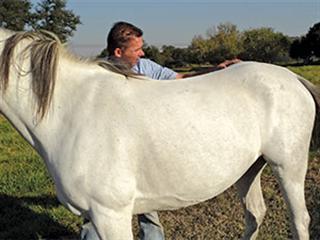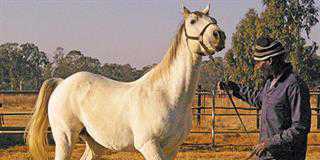
The spine is of particular interest to the equine chiropractor because of its effect on the nervous system throughout the horse’s body. As with all other alternative therapies, chiropractic focuses on the ‘entire horse’ and can be used for treating a variety of performance problems. However, nothing replaces veterinary care.
Unfortunately, most people phone a chiropractor only when their horse has a ‘back problem’.
This is a mistake. Equine chiropractic deals not only with the spine’s ‘bio-mechanical dysfunction’, but also the nervous system. Think of the spinal cord as a highway of information, where the nerves are little roads that lead to homes, shopping centres and parks. Every organ in the body needs these nerves to work correctly.
The nerves emerge from the spinal cord between the vertebrae. When vertebrae are misaligned, even slightly, this can cause havoc with the flow of nerve impulses. These small misalignments are referred to as ‘subluxations’.
Misalignment – and stiff muscles
The chiropractor treats and corrects the subluxation, bringing back balance to the nervous system. In medical terms, subluxation is entirely different to what it is in chiropractic terms, as Sarah Winch points out in The Horse’s Back. Chiropractors define a subluxation as the “functional misalignment of a vertebra or the limited mobility of its facet joints”.
What this means, in essence, is that the horse loses the normal range of flexibility, resulting in poor performance and subsequently stiff, tight muscles. This can have an effect on tendons. I am, of course, keeping things simple. These problems, notes Ted Stashak in Practical Guide to Lameness in Horses, are not only limited to the spine.
Gentle yet firm realignment
To realign the subluxation, an ‘adjustment’ is made along the plane of the joint. ‘Adjustments’ are very specific, high-speed, low-force movements that move the joint past its normal range of motion, without going so far as to cause discomfort.
To the untrained eye, the chiropractor might seem to be just touching the horse when palpitating to find the problem. But even though your horse is big and has large muscles over its spine, the vertebral joints are flexible and relatively easy to manipulate. The degree of discomfort your horse experiences will determine how many treatments are needed.
Contact Kim Dyson on 082 888 6511 or at [email protected]. Please state ‘Horse therapy’ in the subject line of your email.













